Growing apples is an enriching and rewarding endeavor for many enthusiasts and hobbyists, but it can present challenges due to various diseases that affect apple trees. This article aims to guide you on your journey to becoming skilled in cultivating disease-resistant apple trees, delving into their various types, common diseases they combat, and general care, pruning, pest control, and harvesting practices.
Types of Disease-Resistant Apple Trees
Disease-resistant apple trees are an ideal choice for enthusiasts and hobbyists who want to enjoy growing apples with minimal use of chemical treatments. One of the most popular disease-resistant apple varieties is Liberty. Introduced in the late 1970s, Liberty is most resistant to common diseases such as apple scab, powdery mildew, cedar apple rust, and fire blight. The apples produced by Liberty trees are medium-sized, slightly tart, and are excellent for fresh eating, juicing, and cooking. The trees produce a heavy crop and are known for their consistent annual bearing.
Another great option for disease resistance is the GoldRush apple tree variety. This variety is highly resistant to scab, cedar apple rust, and moderately resistant to powdery mildew. GoldRush apples are known for their excellent storage capabilities, with the potential to remain crisp and flavorful for up to seven months. These apples have a tart, tangy flavor that mellows and becomes sweeter with storage. GoldRush apple trees grow best in areas with hot summers, and the mature trees produce a prolific crop.
The Enterprise apple tree is a highly favored disease-resistant option for enthusiasts or hobbyists looking to become skilled in growing disease-resistant apple trees. This variety was developed by Purdue University in the 20th century and is highly resistant to scab, cedar apple rust, and fire blight, and moderately resistant to powdery mildew. Enterprise apples are medium to large size with a deep red skin and a firm, crisp texture. The flavor is described as mildly tart and sweet, improving after a period of storage. These apples are perfect for eating fresh and for culinary use. Additionally, the Enterprise variety is suitable for growers seeking a later harvest, as fruits ripen in late October to early November.
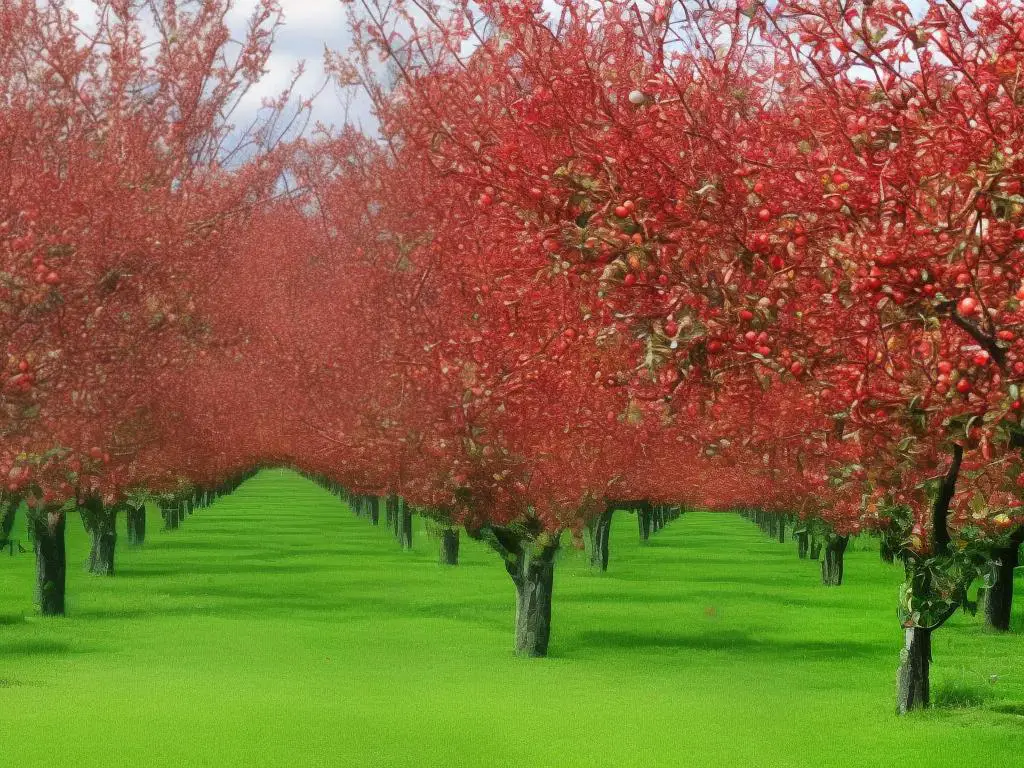
Common Apple Tree Diseases and Resistance
As a disease-resistant apple tree enthusiast, it’s important to understand the common diseases affecting apple trees, such as apple scab, fire blight, and cedar-apple rust. These diseases can lead to weakened growth, reduced yield, and in some cases, death of the tree. By focusing on developing your skill set in growing disease-resistant varieties like the Enterprise apple tree, you can better prevent these issues and enjoy a successful harvest.
Apple scab is a fungal disease that causes dark, irregularly shaped lesions on the leaves and fruits, and it can be both visually unappealing and detrimental to the overall health of the tree. Fire blight, caused by the bacterium Erwinia amylovora, is characterized by wilted and blackened leaves, fruits, and branches, and is highly contagious.
Cedar-apple rust is another fungal disease that forms yellow or orange spots on the leaves and fruits, and can weaken the tree’s ability to produce a healthy crop.
In order to combat these issues, various disease-resistant apple tree varieties have been developed through selective breeding and genetic engineering. For example, varieties resistant to apple scab, such as ‘Liberty’ and ‘Enterprise’, have been bred using alleles from crabapple species that possess natural immunity. Similarly, fire blight-resistant apple trees, such as ‘Sundance’ and ‘Florina’, have been bred with the goal of reducing bacterial susceptibility. The use of disease-resistant apple tree varieties has been shown to increase the overall health and productivity of an orchard, allowing easier management of these issues.
For enthusiasts looking to cultivate disease-resistant apple trees, a combination of proper breeding, cultural practices, and integrated pest management strategies can significantly reduce the incidence of diseases. Correct pruning methods can help remove infected or dead tissue, reducing the spread of diseases. Moreover, providing optimal growing conditions, such as proper sunlight, water, and nutrients, can increase overall tree vigor and make it harder for diseases to establish. However, it’s important to note that no apple tree is entirely immune to disease, and a combination of these methods is vital for maintaining a healthy orchard.
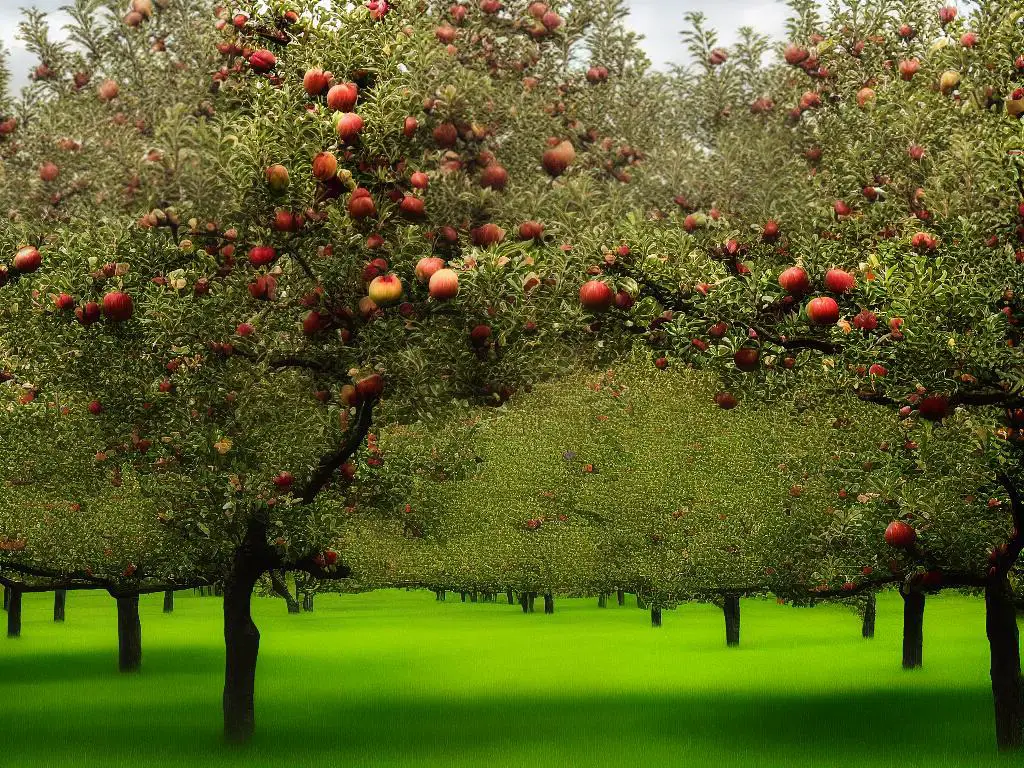
Planting and Care for Disease-Resistant Trees
To ensure the health and success of your disease-resistant apple trees, start by selecting an appropriate location that meets their needs. Choose a site with well-draining soil and full sun exposure, as apple trees thrive with at least 6-8 hours of direct sunlight per day. Also, avoid planting trees in low areas or near structures that might provide excessive shade or hinder proper air circulation. Good airflow can help prevent the development of fungal diseases and keep your apple trees healthy, connecting seamlessly with the breeding, cultural practices, and pest management efforts discussed in the previous paragraph.
Before planting your disease-resistant apple trees, proper soil preparation is essential for promoting tree establishment and growth. Perform a soil test to determine the need for amendments such as lime, sulfur or organic matter. Ideally, apple trees prefer a soil pH between 6.0 and 6.5, and incorporating organic matter into the planting hole can help improve soil fertility and structure. When planting, dig a hole twice as wide and just as deep as the tree’s root ball, and spread the roots out evenly before backfilling with soil. Water thoroughly and mulch the area around the tree to conserve moisture, suppress weeds, and maintain a consistent soil temperature.
Ongoing maintenance plays a pivotal role in keeping disease-resistant apple trees healthy and productive. Regular watering is crucial, especially during the first two years of the tree’s life, to ensure it establishes a deep root system. Keep the soil consistently moist but avoid over-watering, as this can lead to root rot and other issues. Implement a balanced fertilizer program depending on your soil test results and tree age, making sure not to over-fertilize. One essential aspect of proper care is pruning, as it promotes air circulation, reduces the chance of disease, and encourages the development of healthy fruit-bearing branches.
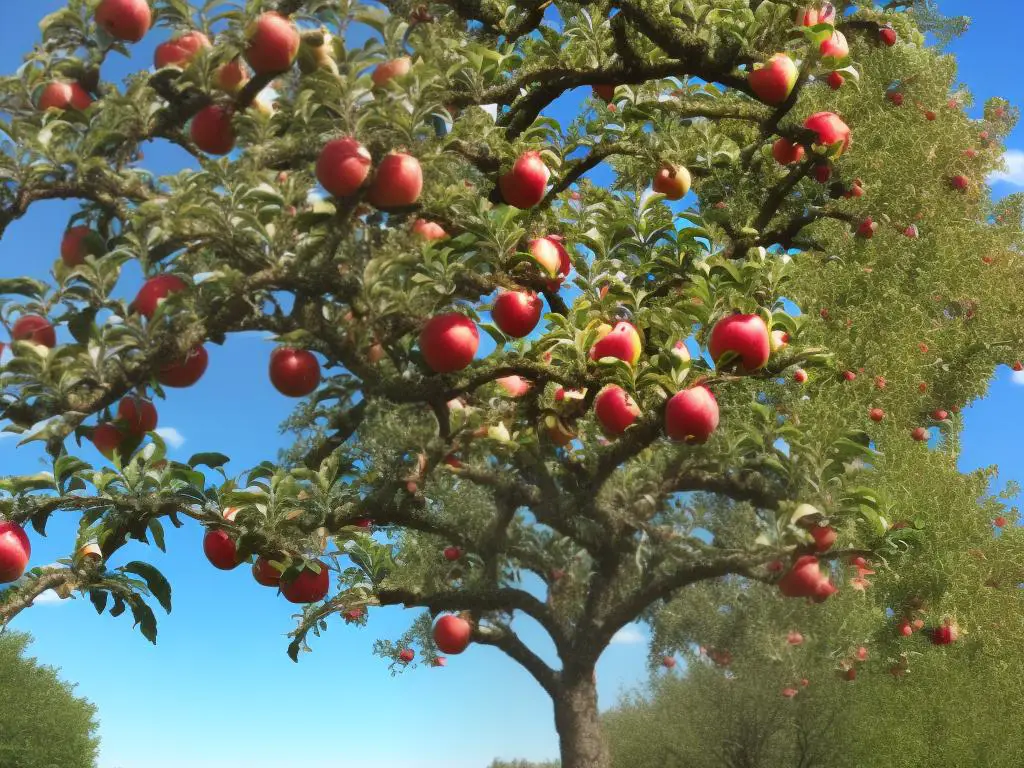
Pruning and Training Disease-Resistant Apple Trees
Pruning and training disease-resistant apple trees are not only crucial for the tree’s health but also for maximizing fruit production. Proper pruning allows for better air circulation and sunlight penetration, both of which ultimately lead to healthier trees and improved fruit yield. The best time to prune apple trees is during their dormant season, typically in late winter or early spring. This timing enables faster healing and promotes better growth during the upcoming growing season. When pruning, it’s essential to remove dead, diseased, or broken branches, as well as cutting back excessive growth to maintain the tree’s desired shape and size. By incorporating these practices, you can support your disease-resistant apple trees’ ongoing health and productivity.
Training disease-resistant apple trees is equally important in ensuring their overall health and productivity. Training methods, such as central leader, modified central leader, and espalier, can be implemented to encourage strong branch structure and promote better fruit-bearing capabilities. The central leader method involves training the tree to have one main stem or trunk with several tiers of branches radiating out from it. In contrast, the modified central leader method presents a more open and vase-like structure with a few central branches instead of just one. The espalier method, which involves training the tree along a flat plane, often against a wall or fence, is also beneficial for space-saving and easier harvesting in smaller garden settings.
One essential aspect of cultivating disease-resistant apple trees is maintaining a balance between vegetative growth and fruit production. Over-zealous pruning may hinder fruiting as the tree will focus on producing new growth instead of fruit. Conversely, insufficient pruning can result in weak branches that cannot support heavy fruit loads. Thus, a combination of annual pruning and diligent training is the ideal approach to promote healthy tree growth, prevent disease, and ensure bountiful fruit harvests.
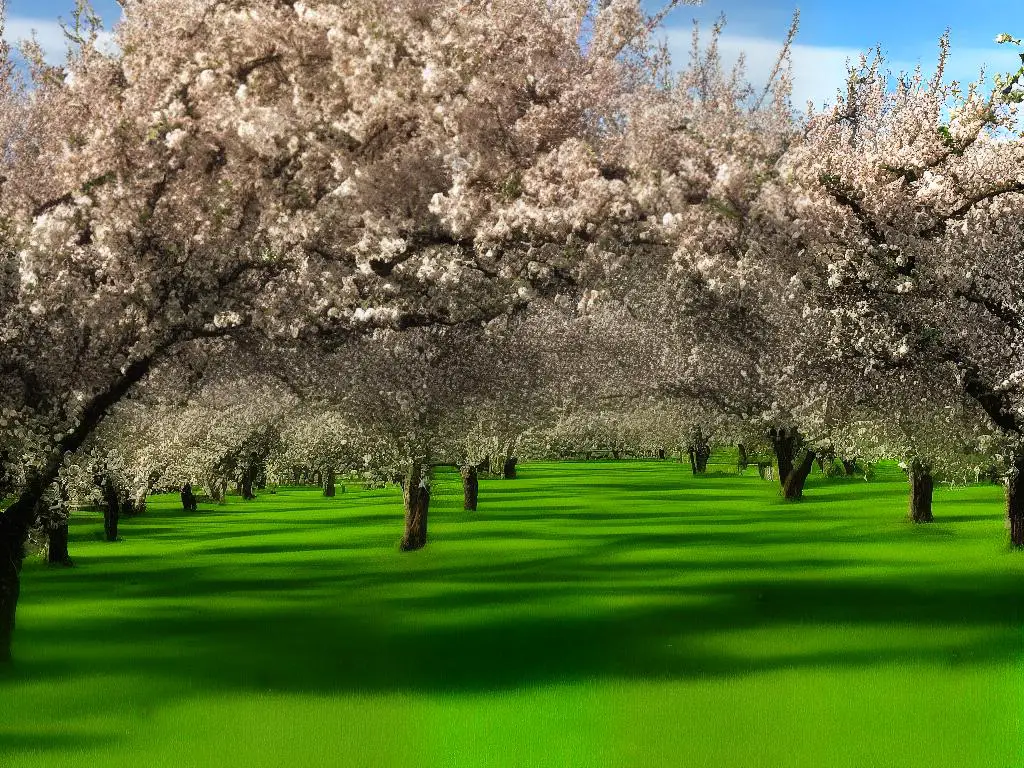
Pest Control and Prevention
Pest control and prevention also play a significant role in maintaining the health and productivity of disease-resistant apple trees. Common pests such as apple maggot flies, plum curculios, and aphids may still affect these apple trees. To prevent infestations and ensure the overall well-being of your trees, adopting organic or non-chemical preventive measures is essential. By implementing these measures, you can minimize the risks of potential damage while nurturing a healthy ecosystem for your apple trees to thrive.
One effective organic approach in pest control is the use of beneficial insects to prey on pests that might harm your apple trees. Introducing predator insects such as ladybugs and lacewings can help control the population of rampant pests like aphids. Additionally, encouraging birds and insect-eating animals to visit your apple tree orchard can lessen the chances of pest infestations. To attract such beneficial creatures, consider planting a diverse range of plants around your apple trees or installing birdhouses and perches. Regularly monitoring your apple trees is also essential in keeping pests at bay. This allows you to observe signs of infestations early and take timely action, like removing affected leaves or branches, before the situation worsens.
One effective preventive method for maintaining disease-resistant apple trees involves using physical barriers to disrupt the movement of pests and limit their access to your trees. A common example is the use of sticky tapes or bands wrapped around the trunks of your apple trees to catch pests like apple maggot flies or ants. Cultural practices such as proper tree spacing and pruning can also help improve air circulation and light penetration, thereby discouraging the habitation of pests. Moreover, maintaining a clean orchard by eliminating debris, fallen leaves, or fruit on the ground can prevent pests from overwintering or finding breeding grounds near your disease-resistant apple trees. A combination of these non-chemical strategies can contribute to a healthy, pest-free environment for your apple trees to thrive in.
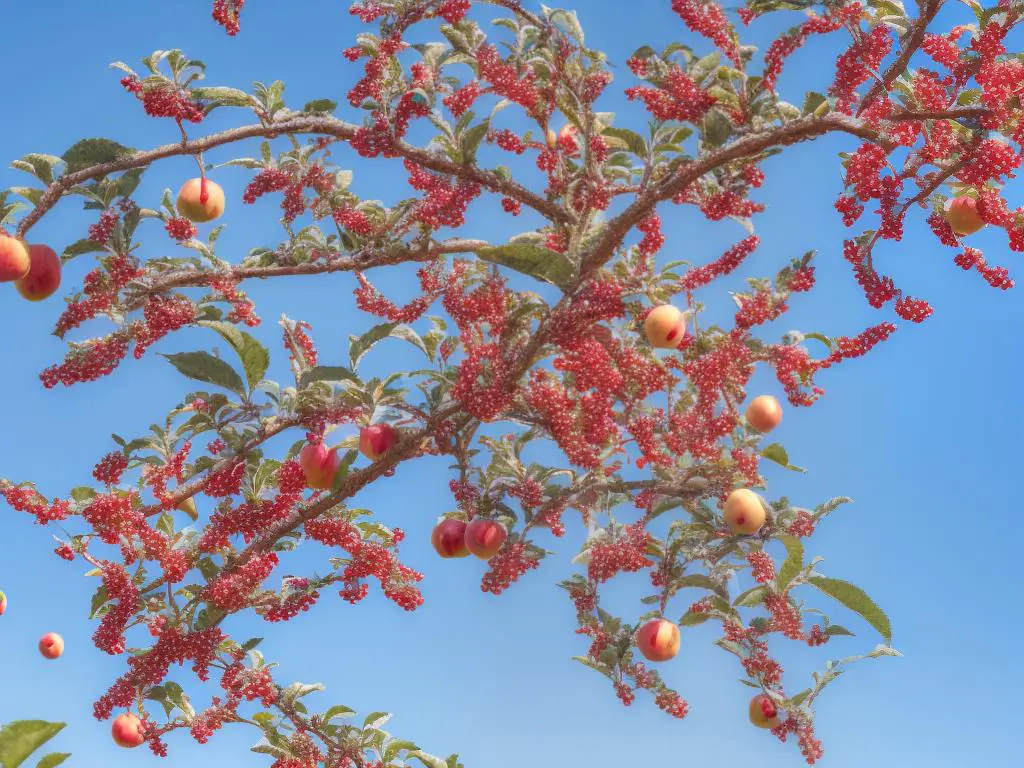
Harvesting and Storage
When it comes to harvesting apples from disease-resistant trees, it’s important to select the optimal time for picking the fruit when it’s ripe and at its best quality. This can vary depending on the variety of the disease-resistant apple tree, but generally, apples are ready to harvest between August and October. To determine if the apples are ripe, pay attention to the apple’s color, firmness, and ease of detachment from the tree. When an apple is ripe, it will often come off the tree with a simple twist and lift motion, and the color will also change, often becoming more vibrant or uniform in appearance. Proper timing of the harvest, coupled with diligent pest management practices, can ensure healthy and bountiful crops from your disease-resistant apple trees.
Techniques for picking apples from disease-resistant trees should be mindful to prevent any damage to the fruit and the tree. One method for harvesting apples is using a fruit-picking basket attached to a long pole. This allows for picking apples higher up without the need for a ladder. The basket gently grabs the apple and detaches it from the tree without bruising the fruit. When hand-picking apples, use the twist and lift technique mentioned earlier to avoid damaging the fruit or breaking off the tree branches.
For long-term storage of apples harvested from disease-resistant trees, it is essential to select bruise-free and unblemished apples, as damaged fruits will spoil more quickly. Store these apples in a dark, cool, and humid environment to retain their freshness and quality. A temperature of 32-40°F and a relative humidity of 90% are ideal conditions for apple storage. Using perforated plastic bags or plastic containers with air holes can also help maintain the humidity level around the fruit. Apples give off ethylene gas, which can speed up ripening, so it is essential to store them separately from other fruits and vegetables to avoid premature spoilage. Regularly inspect the stored apples and remove any fruits that show signs of spoilage to prevent the spread of decay to other apples.
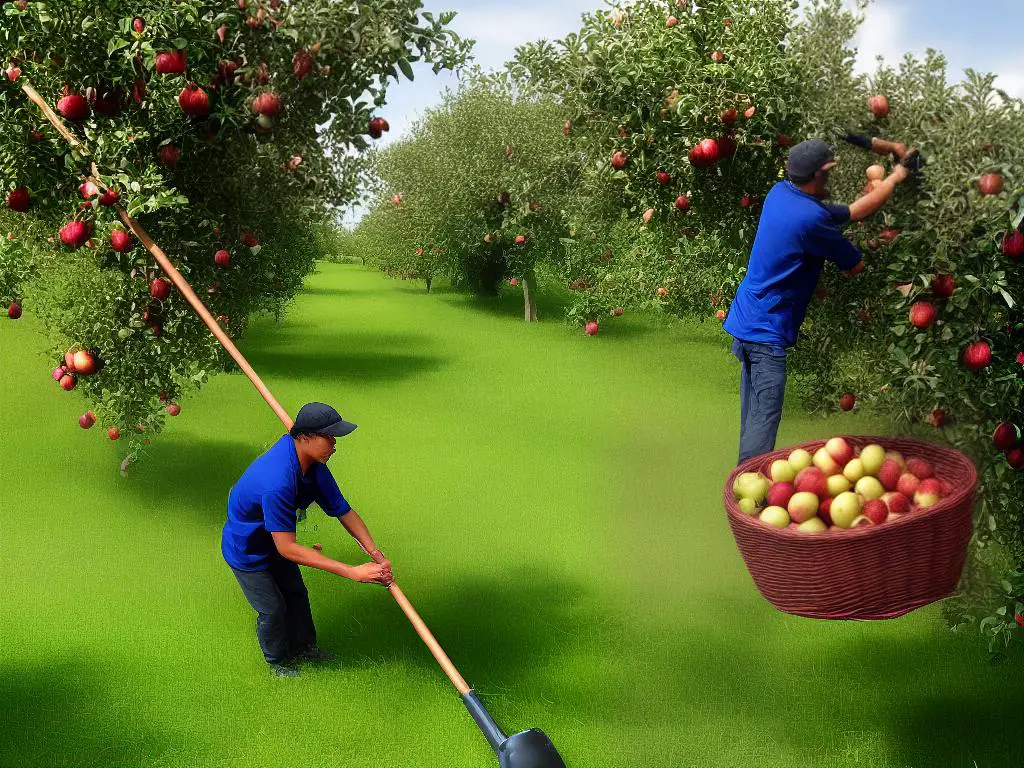
By familiarizing yourself with the different types of disease-resistant apple trees, understanding the diseases they are resilient against, and implementing proper planting, care, pruning, pest control, and harvesting techniques, you can ensure healthy growth and bountiful fruit production. This knowledge equips you with the tools you need to enjoy the benefits of disease-resistant apple trees fully. Happy apple growing!
